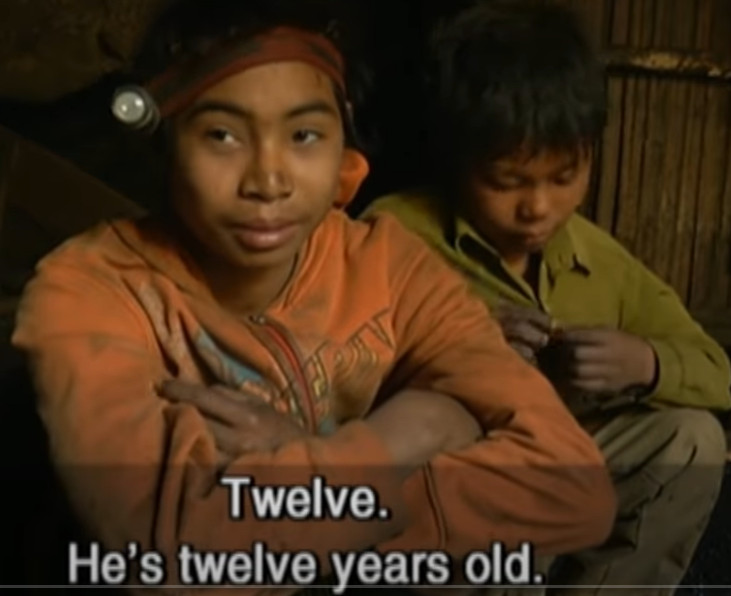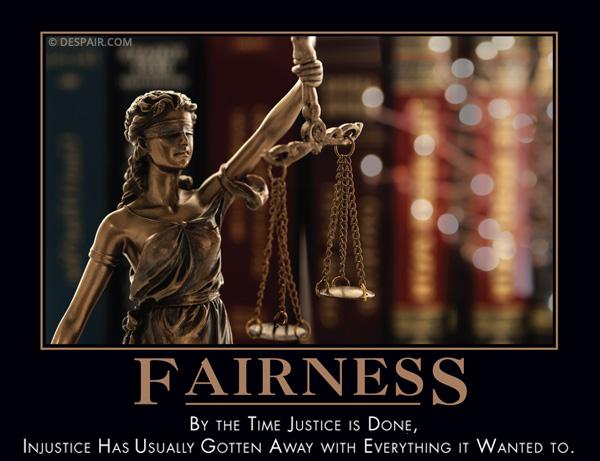
Fairness is what justice really is versus Fairness by the time justice is done
(cfr. Next page).
Page Description
Explore how people can be held guilty for actions they didn’t commit.
Delve into the conflict between justice and conscience and its broader implications.
The British Post Office
A Scandal Visible from the Sky
This is the Core of the Website
When the Truth Comes Out, The Rest Will Follow
History has shown that institutions often resist accountability until the weight of undeniable truth forces change.
The wrongful convictions of the Scottsboro Boys, the Central Park Five, and victims like Walter McMillian reveal how deeply flawed justice systems can be.
The British Post Office scandal stands as another stark example—where those in power ignored the truth for years, until relentless campaigning forced it into the open.
This page explores these cases as a Litmus Test for justice: When systems fail, who pays the price? And once the truth emerges, does justice truly follow?
The stories that follow give voice to those who were failed by justice — and challenge us to face what that failure reveals.
Wanneer de Waarheid Naar Buiten Komt, Volgt de Rest
De geschiedenis laat zien dat instituties zich vaak pas verantwoorden wanneer de onmiskenbare waarheid hen daartoe dwingt.
De onterechte veroordelingen van de Scottsboro Boys, de Central Park Five en slachtoffers zoals Walter McMillian tonen aan hoe diep de gebreken in rechtssystemen kunnen gaan.
Het Britse Post Office-schandaal is een ander schrijnend voorbeeld – waar de waarheid jarenlang werd genegeerd, totdat onvermoeibare inspanningen haar uiteindelijk aan het licht brachten.
Deze pagina onderzoekt deze zaken als een Lakmoesproef voor Gerechtigheid: Wanneer systemen falen, wie draagt dan de gevolgen? En als de waarheid eenmaal bekend is, volgt gerechtigheid dan echt?
De verhalen die volgen geven een stem aan wie door justitie in de steek werden gelaten — en dagen ons uit om onder ogen te zien wat dat falen onthult.
🌿
When justice fails, who speaks for the innocent?
Some were only children. Some lost decades. All were betrayed.🌿
👉 Justice – A Completely Different World
This page is not just about names. It’s about what kind of society we become when we look away.🌿
👉 When Silence Becomes Complicity
This page looks beyond individual cases — and exposes the deeper pattern: when truth becomes inconvenient, and silence becomes a strategy.🌿
👉 Challenging Justice: The British Post Office Scandal
What if justice doesn’t protect the innocent — but protects itself?
🌿
👉 Justice – Your life hangs by a thread – Conscience Ignored
A single thread holds a life — until justice forgets what it’s for.
🌿
👉 The Soul Left Unseen: What Justice Forgot
When the soul is forgotten, justice becomes hollow — and humanity fades into silence.
🌿
👉 Justice, the Soul, and Conscience
This page is not only about justice — it’s about soul, memory, and the cost of silence.
🌿
Before justice, before conscience — there is the soul that gives them meaning.
🌿
When lives are on the line, silence and neglect are not neutral — they are a choice.
🌿
When institutions turn away, the damage isn’t accidental — it’s sustained by design.
Introduction
The Essential Question in simple words is:
how can someone be guilty of something they didn’t do?
And yet, what happens when those in power are…
It is already the subtitle of the website.
Let’s come straight to the point:
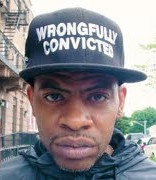
John Bunn was only 14
It is disturbing and incomprehensible.
- deliberate wrongdoing within entities in the justice system, It Mirrors Madness,
- elaborated in points A to P ranging from The Inconceivable to The Aura of Perfection.
- This includes a comprehensive 16-point overview that provides a glimpse into the essence of the website.
- One compelling example is highlighted by Lord Justice Fraser in point N where he emphasizes
A Cock-and-Bull Story with the strongest language:- ‘This approach by the Post Office has amounted, in reality, to baseless assertions and denials that ignore what has actually occurred.
- It amounts to the 21st-century equivalent of maintaining that the Earth is flat’
- However, as the saying goes: “A lie can travel halfway around the world while the truth is putting on its shoes.”
- Even if it takes endless years, it was the stubbornness of one man that changed everything.” Click here for more.
Laten we ter zake komen:
- opzettelijk wangedrag binnen entiteiten in het rechtssysteem, het weerspiegelt waanzin,
- uitgewerkt in de punten A tot en met P, variërend van ‘Het Ondenkbare’ tot ‘De Aura van Volmaaktheid’.
- Dit omvat een uitgebreid 16-puntenoverzicht dat een beeld biedt van de essentie van de website.
- Een treffend voorbeeld wordt benadrukt door Lord Justice Fraser in punt N, waar hij met de krachtigste bewoordingen spreekt over ‘Een Kletskoekverhaal’:
- ‘De benadering van de Post Office komt in werkelijkheid neer op ongefundeerde beweringen en ontkenningen die negeren wat er daadwerkelijk is gebeurd.
- Het is het 21e-eeuwse equivalent van volhouden dat de aarde plat is.’
- Echter, zoals gezegd: “Al is de leugen nog zo snel, de waarheid achterhaalt ze wel”.
- Al heeft het eindeloos veel jaren gevergd, het was de koppigheid van één man die alles veranderde.” Klik hier voor meer.
“Your very existence as a human is under threat.”
If you think it can’t happen to you,
watch these 7 innocent people prove otherwise.
They had values. They were innocent.
The system broke them.
The Ethical Mirror
The Wake-Up Call
A. Inconceivable
What you see in the video is extreme:
young, innocent children,
for example, 14 years old,
being framed in jail,
knowing that there is nothing wrong.
Please click the link
It is incomprehensible that someone
could knowingly do something like this
to someone else’s life.
It is ‘one of the biggest questions of justice’.
Are you still a human being?
Is this still a society?
Think of the opposite of what the 22-year-old Mamoudou did in 30 seconds
for a 4-year-old child.
In other words:
the devil that nails down
14-year-old John Bunn
where he doesn’t belong,
contrasts sharply with the heroism of
a 22-year-old who acts immediately.
This embodies ‘The law of Nature’.
There are moments when injustice is so profound that it defies belief.
John Bunn is exemplary for how the ‘power institution of justice’ is structured and how the corrupt former New York City detective Louis Scarcella effortlessly managed to destroy the life of a 14-year-old child. He is a conman, much like several others that appear on this website.
When justice fails on an epic scale, can you as a human being be indifferent?”
When you find yourself in such a situation, a derailing justice system, and to make matters worse, when justice does not apply to you and yet you are wrongly convicted, and even wrongly imprisoned, you are still bound to a blinded, derailed, and disrupted justice system.
Legal systems are both a solution and a problem. Unconstrained power can cause great injustice.
This is not just John Bunn’s story. It is the story of countless others. And it raises the unthinkable question: If innocence is no defense, who is truly safe?
It is a pattern that repeats itself. Time and again, justice does not fail by accident—it is derailed by those who abuse it. What does it say about a society when innocence is no shield against prosecution? When truth holds no weight in the face of authority?
It’s almost impossible to be exonerated, as evidenced by the examples on this webpage and throughout the website, such as ‘The Putten Murder Case’ in the Netherlands.
Er zijn momenten waarop onrecht zo diepgaand is dat het elke vorm van begrip tart.
John Bunn is exemplarisch voor hoe het ‘machtsinstituut justitie’ in elkaar zit en hoe de corrupte voormalige New York City detective Louis Scarcella, moeiteloos in staat was het leven van een 14-jarig kind kapot te maken. Hij is een oplichter, zoals er meerdere voorkomen op deze website.
Wanneer justitie op epische schaal faalt, kun je als mens onverschillig zijn?
Wanneer je in zo’n situatie terecht komt, een ontspoort justitie systeem, en tot overmaat van ramp, wanneer justitie niet op je van toepassing is en des ondanks je onterecht veroordeelt wordt, en zelfs onterecht in de gevangenis komt, dan nog zit je vastgekluisterd aan een verblind, ontspoort en ontwricht justitie systeem.
Rechtssystemen zijn zowel een oplossing als een probleem. Ongebreidelde macht kan groot onrecht veroorzaken.
Dit is niet alleen het verhaal van John Bunn. Het is het verhaal van ontelbare anderen. En het roept de ondenkbare vraag op: Als onschuld geen verdediging is, wie is er dan écht veilig?
Dit patroon herhaalt zich keer op keer. Justitie faalt niet toevallig – het ontspoort door degenen die het misbruiken. Wat zegt dit over een samenleving waarin onschuld geen bescherming biedt tegen vervolging? Waarin waarheid geen gewicht heeft tegenover macht?
Het is quasi onmogelijk om geëxondereerd te worden, zoals blijkt uit de voorbeelden op deze webpagina en doorheen de website cfr. ‘De Puttense Moordzaak’ in Nederland.
JUSTICE COURSE PREVIEW
Please listen to video 5:
Post office inquiry: Fujitsu manager called bankrupted subpostmaster ‘nasty chap’
B. The essence
You can’t look away from the egregious injustice
faced by these individuals.
Indifference is not an option
when faced with such a significant and severe situation.
It is difficult. It is ‘a sign on the wall’. A Red Flag.
——–
We are dealing with a semblance of reality.
Something that appears to be real or true but is actually deceptive or not entirely genuine.
——–
For example the high-profile case of Lian Allan in Great Britain in 2016 (point 1 below)
‘puts the finger on the sore spot’,
as prosecutor Jerry Hayes himself said, “It is just sheer incompetence”.
——–
The handling of the case was Neither Fish Nor Fowl;
it didn’t meet the standards of justice,
almost as if it was a last-minute decision,
even drawing attention in the House of Commons.
——–
An appearance of reality, jaded, bewildering and surreal.
——–
A semblance, an appearance of reality,
in Dutch ‘een schijnwerkelijkheid’.
——–
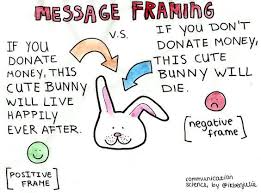
Framing is A Double-Edged Sword, determined by the lens through which one views it. In other words, framing is a complex concept influenced by people’s perspectives.
Framing
Framing is when you subtly steer people toward a certain interpretation by highlighting specific aspects of a subject. It involves selectively presenting information, emphasizing particular elements of a topic or person to create a specific impression, whether in speech or in writing.
In other words Cherry-picking: a tactic where pieces of evidence, statements, facts, or similar situations are selectively mentioned to defend a particular standpoint.
Framing
Met framing, het benadrukken van bepaalde aspecten van een onderwerp, wordt mensen ongemerkt een bepaalde interpretatie opgedrongen. Daarbij selectieve informatie: bepaalde aspecten van een onderwerp of persoon worden benadrukt, waarmee een spreker of schrijver een bepaald beeld creëert.
M.a.w. Cherrypicking; een tactiek waarbij bewijzen, uitspraken, feiten of vergelijkbare situaties selectief genoemd worden om een bepaald standpunt te verdedigen.
When there is framing or cherry-picking, someone playing the role of The Devils Advocate is a good idea.
Cherry-picking
- Notice the wrongful prosecution against Liam Allan, the 19-year-old criminology student in Great Britain in 2016, is based on cherry-picking of a ridiculous false accusation. (Liam Allan is the subtitle and template of the website.)
- Although the police couldn’t ignore the irrefutable evidence, stemming from the complete download of messages from a former girlfriend 7 months prior, which they possessed.
- In other words, this is a serious systemic flaw within the judicial system.
- In September 2015, Liam Allan started university. Reading for a Criminology and Criminal Psychology degree, he was just like any other fresher. But just a few months into his course, he was accused of rape.
- It became a high profile case. Articles in The Times, the BBC and even a question in the House of Commons to Prime Minister Theresa May. Cfr. The Making of.
Cherry-picking
- Bemerk de oneigenlijke vervolging tegen Liam Allan, de 19-jarige criminologiestudent in Groot-Brittannië in 2016, berust op cherry-picking van een idiote valse beschuldiging. (Liam Allan is de subtitel en de template van de website.)
- Hoewel de politie niet om het onweerlegbare bewijs heen kon, afkomstig uit de volledige download van berichten van een vroegere vriendin 7 maanden daarvoor, waarover ze beschikten.
- Met andere woorden, dit is een ernstige systeemfout binnen het justitiële systeem.
- In september 2015 begon Liam Allan aan de universiteit. Hij studeerde criminologie en criminele psychologie en was net als elke andere nieuweling. Maar al na een paar maanden werd hij beschuldigd van verkrachting.
- Het werd een high profile case. Artikels in de Times, de BBC en zelfs een vraag in The House of Commons aan Prime Minister Theresa May. Cfr. The Making of.

‘It wasn’t against my will or anything’: How a rape case built over two years fell apart with a single text.
The basis for Liam’s prosecution relied on paper-thin evidence, which, as Jerry Hayes put it, came dangerously close to resulting in a wrongful conviction. The justice system seemed almost like Candid Camera. Justice, Like a Two-Edged Sword, highlighted the precariousness of the situation. It’s just sheer incompetence. This illustrates the gravity and fragility of our justice system in specific cases.
On a lighter note, have you seen the hilarious ‘Exploding iPhone Prank’ from Candid Camera?
Suddenly Trapped — Without Warning
One moment you’re living your normal life — the next, you’re accused, arrested, and facing prison for something you didn’t do. No warning, no reason, just the machinery of the justice system turning against you.
Like a hidden-camera prank gone horribly wrong, it begins with disbelief — but this time, no one shouts “gotcha.”
This is not comedy. It’s the terrifying reality for people like Liam Allan — pulled into a nightmare by a false accusation, with exonerating evidence ignored or hidden.
When justice misfires, it doesn’t tap you on the shoulder. It hits like a trapdoor opening beneath your feet.
Plotseling en Volledig Vastgelopen
Het ene moment leidt je een normaal leven — het volgende ben je beschuldigd, gearresteerd en dreig je in de gevangenis te belanden voor iets wat je niet hebt gedaan. Geen waarschuwing, geen aanleiding — alleen het systeem dat zich ineens tegen je keert.
Alsof je in een verborgen cameragrap belandt die compleet uit de hand loopt. Alleen roept er nu niemand “gefopt”.
Dit is geen komedie. Het is de angstaanjagende realiteit voor mensen zoals Liam Allan — meegesleurd in een nachtmerrie door een valse beschuldiging, terwijl ontlastend bewijs wordt genegeerd of achtergehouden.
Wanneer justitie ontspoort, krijg je geen teken. Het voelt alsof de grond plotseling onder je voeten verdwijnt.
The situation echoed the eerie authenticity of a Candid Camera episode, where individuals, unsuspecting and enveloped in the smoke of a false reality, believed in the impending explosion, much like how baseless allegations almost ensnared Liam Allan in a wrongful conviction, showcasing the fragile trust within our justice system.
De situatie weerspiegelde het griezelige realisme van een aflevering van Candid Camera, waar individuen, onwetend en omhuld door de rook van een valse realiteit, geloofden in de dreigende explosie, net zoals ongegronde beschuldigingen bijna Liam Allan in een onterechte veroordeling deden belanden, waarbij het fragiele vertrouwen in ons rechtssysteem aan het licht kwam.
Consider the British Post Office scandal
and numerous cases featured on this homepage
and throughout the website;
they all serve as prime examples where everything
has gone wrong in terms of justice.
C. Clarification note
Raphael Rowe tells the story of
how he spent 12 years in prison
for crimes he did not commit.
Raphael is a clear indication or warning of something that is very wrong
in the justice system.
A Red Flag.
He was about 19.
Nobody wants to be fed lies. It’s better to be honest when you see how the justice system disfigures people by imprisoning them when they’re innocent.
When justice goes wrong, it goes quite wrong.
Notice the word ‘orchestrated’ in the 4 points at the top of the page.
Not only Raphael Rowe is a sign on the wall, all examples throughout the website are an indication and a serious warning.
Calling something like this an exception is wrong!
Transparency and truthfulness are crucial to prevent the injustice of imprisoning those who haven’t committed any crimes.
Niemand wil blaasjes wijsgemaakt worden. Je kan beter eerlijk zijn als je ziet hoe het justitie systeem mensen verminkt door ze onschuldig op te sluiten.
Als justitie in de fout gaat, gaat het behoorlijk fout.
Bemerk ‘orchestrated’ in de 4 punten bovenaan de webpagina.
Niet alleen Raphael Rowe is een teken aan de wand, alle voorbeelden doorheen de website zijn een indicatie en ernstige waarschuwing.
Het is fout zoiets een uitzondering te noemen!
Transparantie en waarachtigheid zijn cruciaal om te voorkomen dat onschuldige mensen worden opgesloten.
Trust is a judgement
that someone else can be relied upon or
that some institution can relied on.
It isn’t proof.
Trust is what we do when we need a shortcut.
Please listen to the BBC MP3 of philosopher, Onora O’Neill.
The big idea: the new distrust (about 10 minutes)
When you use justice in a negative way like in the cases of
John Bunn, Raphael Rowe, Liam Allan,
the list of 9 examples point 3 below, and so forth,
you automatically get such peculiar orchestrated results.
Wanneer je justitie op een negatieve manier gebruikt,
zoals in de gevallen van John Bunn, Raphael Rowe, Liam Allan,
de lijst van 9 voorbeelden point 3 below hieronder, enzovoort,
krijg je automatisch zulke eigenaardige georkestreerde resultaten.
D. No-nonsense
Sheldon Thomas was just 16
when he was convicted
on basis of a photo and
it was not him
december 2004.
19 year innocent in prison.
He was 35 when he came free.
Thomas was “denied due process at every stage.”
The case was based on 100% lies.
In the examples on this current page and throughout the website, we are continuously confronted with orchestrated, manipulated, or deceptive decisions without legality.
Authenticity: what’s real and what’s fake.
There are plenty of examples where justice is used as a toy, where justice fools someone.
It is all about dishonesty.
There is a problem, a big, big problem.
The way of looking at the justice system is not right, as explained in the above-mentioned explanation ‘The essence’.
In the reopened trial, the prosecution ruled that the police, prosecutors and judge of the original trial knew from the beginning that the photo in the sequence was not the Sheldon Thomas they arrested. Nevertheless, they went ahead. In addition, a group of 32 black law students examined the photo of Thomas. 27 students said, correctly, that the arrested Sheldon Thomas was not seen in the photos.
One can sabotage justice, even on a large scale, the case
The Post Office Wrongful Convictions Scandal
is exemplary. People know that the justice system is susceptible to fraud. This webpage and the entire website are living proof of that.
Furthermore, lower-standing database in point 3 with about 3500 examples of exonerated individuals with case descriptions and a brief summary at the top.
Among others, the Nijmegen-based Emeritus Professor of Philosophy of Science, Ton Derksen, who overturned the conviction of Lucia de Berk, after she had been wrongly imprisoned for 6 years, and is increasingly involved in revisions, uses the term judicial fraud and the pitfalls of truth-finding that underlie it.
Andrew Makinson – wrongly imprisoned for 17 years – unsafe conviction
In het heropende proces heeft de aanklager geoordeeld dat de politie, aanklagers en rechter van het oorspronkelijke proces vanaf het begin wisten dat de foto in de reeks niet de Sheldon Thomas was die ze hadden gearresteerd. Toch zijn ze doorgegaan. Bovendien heeft een groep van 32 zwarte rechtenstudenten de foto van Thomas onderzocht. 27 studenten zeiden terecht dat de gearresteerde Sheldon Thomas niet te zien was op de foto’s.
Men kan justitie saboteren, zelfs op grote schaal
The Post Office Wrongful Convictions Scandal
is desbetreffend exemplarisch. Men weet dat justitie fraudegevoelig is. Deze webpagina en de hele website is daarvan het levende bewijs.
Daarbij lagerstaande database in punt 3 met ongeveer 4500 voorbeelden van geëxoneerden met beschrijving van de zaak en korte samenvatting bovenaan.
O.a. de Nijmweegse Emeritus hoogleraar Wetenschapsfilosoof Ton Derksen die de veroordeling van Lucia de Berk ongedaan maakte, nadat ze al 6 jaar onterecht in de cel zat, en bij steeds meer herzieningen wordt betrokken gebruikt de term justitiefraude en de valkuilen van waarheidsvinding die daaraan ten grondslag liggen.
Andrew Makinson – wrongly imprisoned for 17 years – unsafe conviction
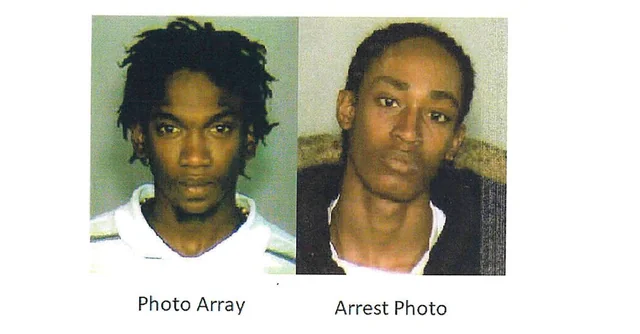
E. Slip through the cracks
A 14-year-old child, ‘George Stinney’ (1944),
executed on the electric chair.
Without a speck of fairness.
It’s a hallmark of the the ‘power institution of justice’.
——–
In point ‘2: A Devilish Construction’ below, Louis Taylor,
a 16-year-old, went from being a hero to becoming
a scapegoat, spending 41 years in prison.
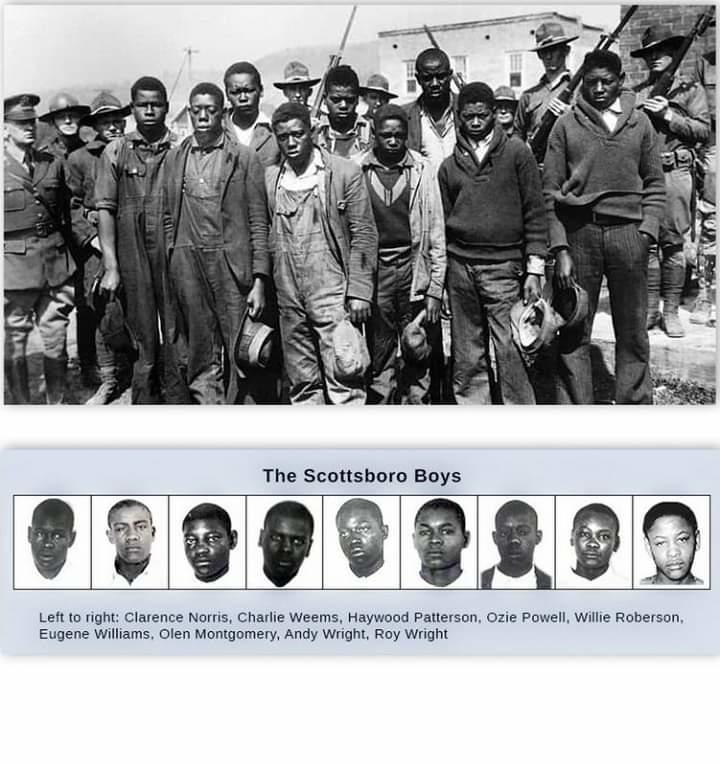
ON THIS DAY…March 25, 1931 The Scottsboro Boys were nine African American teenagers, ages 13 to 20, falsely accused in Alabama of raping two white women on a train in 1931. The landmark set of legal cases from this incident dealt with racism and the right to a fair trial. The cases included a lynch mob before the suspects had been indicted, all-white juries, rushed trials, and disruptive mobs. It is commonly cited as an example of a miscarriage of justice in the United States legal system.
Decisions are made based on ignorance. One cannot imagine it. It is incomprehensible.
Almost 100 years after ‘The Scottsboro Boys’ (1931), the justice system is still trapped in a wrong pattern. Even when everyone knows well what the undeniable reality is, an inherently wrong decision arises.
The harmony of the lives of children, young people, and individuals is, in an impossible and brutal manner, irreversibly altered in a single moment.
Even for the rest of their lives. From the splendor of life to hell in the blink of an eye. It’s an uncomfortable truth.
Men beslist op basis van onwetendheid. Men kan het zich niet voorstellen. Het is niet te begrijpen.
Bijna 100 jaar na ‘The Scottsboro Boys’ (1931) zit men bij justitie nog altijd vast in een fout patroon. Zelfs wanneer iedereen goed weet wat de onomstotelijke werkelijkheid is, onstaat er een intrinsiek foute beslissing.
De harmonie van het leven van kinderen, jongeren en mensen wordt op een onmogelijke wijze, brutaal, op een onherstelbare wijze, in één enkel ogenblik verandert.
Zelfs voor de rest van het leven. Van de glans van het leven bij het knippen van de vinger naar de hel. Het is een ongemakkelijke waarheid.

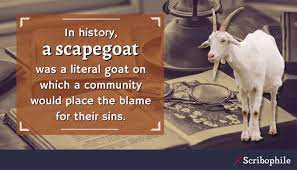
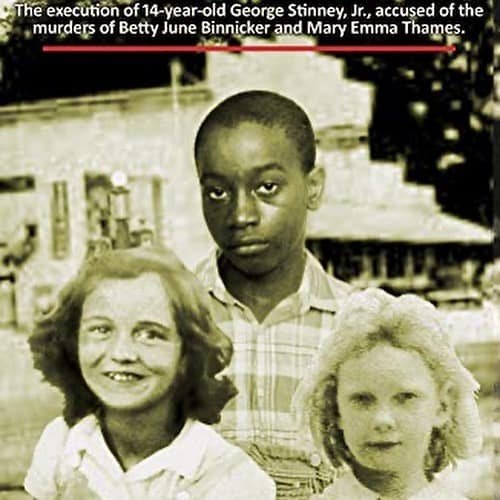
In a debate over the bill in April 2021, McKnight said he agreed with the death penalty in principle but that he opposed the state carrying out executions because of cases of people known to have been wrongfully executed or where there was significant doubt over their guilt.
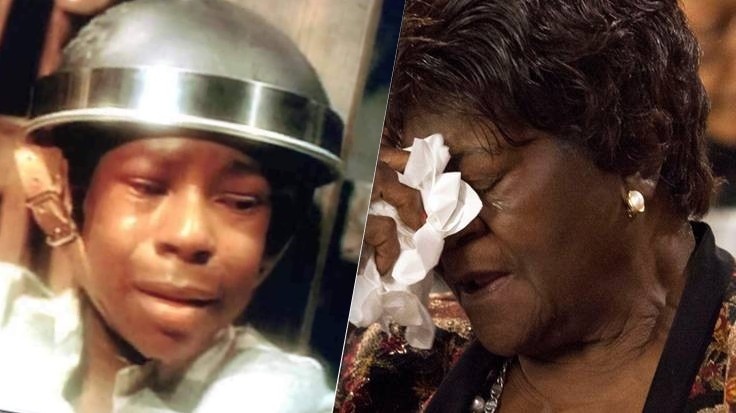
George, who was Black, was put to death in 1944 (point E above) in the Jim Crow era of the South, after being accused of killing two white girls; Betty June Binnicker, 11, and Mary Emma Thames, 7.
The two girls are said to have been last seen while riding their bicycles in Alcolu, South Carolina, when they stopped to ask George and his younger sister Aime if they knew where they could find any maypops, the yellow fruit of passionflowers.
F. An Inconvenient Truth
In the coal mines of India, tens of thousands of children are forced to work in ‘rat holes’ – tiny pits too small for adults to reach.
Why are the authorities turning a blind eye to this lethal and illegal practice?
Please click (the link below the image), watch, and listen to the lives of these two young boys in a 22-minute video.
It captures a defining moment – the place where they belong.
Let children be children.
It’s about school with friends, their growth, and the education they deserve.
The Bible shockingly articulates
the uncomfortable truth of exploiting a child
(as in the video) through the metaphor of
a millstone around the neck
and being cast into
The link provides an overview of hundreds of web pages, subjects and themes.
It’s easy to browse through the website in this way.
De link geeft een overzicht van honderden webpagina’s, onderwerpen en thema’s.
Het is makkelijk om op deze manier doorheen de website te browsen.
The living conditions, housing,
and the reality for these two 12-year-old boys
working in Indian coal mines are appalling.
In other words, their situation is distressing
and shocking due to the harshness
of their work environment.
Please watch the video
It’s like what is depicted by the 12 links next to the image.
It’s like worthless legal decisions highlighted on the website.
Please reread the first three lines of point B above, considering the contents of this ‘Inconvenient Truth’.
Important link
The sheer brutality and inhumanity, representing the darkest facets of modern-day slavery, encapsulate the unfathomable injustice and pain inflicted upon Nsala and his family – a testament to the appalling atrocities committed by fellow humans in 1904. The passage highlights events that occurred during the exploitation era in Belgian Congo.
Which image is extremely strong?
While the the atrocities in the Congo Free State and subsequently in Belgian Congo remained hidden from the public eye until a few years ago, the flaws within courtrooms and halls of justice continue to stay concealed. Examples of egregious judicial failures are illustrated on this homepage and throughout the website.
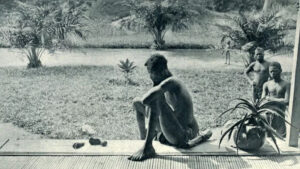
Belangrijke link
De pure wreedheid en onmenselijkheid, die de donkerste facetten van moderne slavernij vertegenwoordigen, vatten het onpeilbare onrecht en de pijn samen die werden toegebracht aan Nsala en zijn familie – een bewijs van de verschrikkelijke wreedheden die in 1904 door medemensen werden begaan. De passage belicht de gebeurtenissen tijdens de uitbuitingsperiode in Belgisch Congo.
Which image is extremely strong?
Terwijl De wreedheden in de Congo Free State en daaropvolgend in Belgisch Congo tot voor enkele jaren verborgen bleef voor het grote publiek, blijft wat fout is in rechtbanken en justitiepaleizen verborgen. Voorbeelden van vreselijke mislukkingen van justitie worden geïllustreerd op deze homepage en door de hele website heen.

G. When ‘the veil of ignorance’ disappears
Exculpatory evidence
Evidence that supports a defendant’s innocence, which must be given to the defense by prosecutors unasked; if this rule is broken, the verdict could be overturned.
There is so much injustice in the justice system.
How to use “exculpatory evidence” in a sentence
- The defense lawyer strongly believes that the withheld surveillance footage is critical exculpatory evidence.
- The judge ordered the prosecution to provide all exculpatory evidence to the defense prior to trial.
- Overlooked exculpatory evidence was found which led to the defendant’s appeal for a new trial.
Deliberate mistakes
One can employ legal means to do wrong things
Particularly when it can disrupt society, irreversibly negatively affect the life of a child or young person, or impact the existential reality of a human life (as expressed in point e of this introduction in the text of 4 paragraphs, with the example of the Scottsboro Boys).
The use of the word ‘exception’ is incorrect
The disaster with The Herald of Free Enterprise in 1987 in Zeebrugge, The Fireworks Disaster in Enschede on Saturday, May 13, 2000, the initial verdict in The Rodney King Trial that led to the 1992 riots in Los Angeles, The Crash of Germanwings Flight 9525 on March 24, 2015, and similar incidents cannot be considered as exceptions.
Particularly, the 9 examples of an unjust conviction in the lower point 3 are also not an exception. As Barry Scheck put it in the case of Michael Morton, they were good lawyers. However, a prosecutor who withheld exculpatory evidence and was subsequently convicted for it. The difficulties faced by Belgian princess Delphine and The Chambermaid in the DSK Case, even though there was no doubt, are likewise not an exception.
It can happen that in your own environment, there are issues that closely resemble a pattern of what you see on the website, like two peas in a pod.
Justice experts, upright professionals, and profoundly knowledgeable individuals aware of the failures within the justice system and the shocking consequences thereof, as evidenced by examples on this webpage and throughout the website, openly acknowledge what is at hand.
You can’t fool anyone.
It occurs that a blatant and clear deceptive construction has been put in place.
This aligns with thousands of cases of exonerated individuals where, in hindsight, after decades, it becomes evident that an unquestionably erroneous verdict was rendered, one that cannot be overlooked.
An orchestrated, manipulated, or deceptive incident has taken place.
When this happens to oneself or when it affects the innocence of a child, causing unbearable pain as seen in numerous examples, an insurmountable existential issue arises.
Het kan gebeuren dat in je eigen omgeving, er kwesties zijn die als twee druppels water gelijken op een patroon van wat je in de website ziet.
Justitie-experts, integere professionals en ernstig onderlegde personen met kennis van het falen van justitie en de schokkende gevolgen daarvan, zoals voorbeelden op deze webpagina en doorheen de website, erkennen openlijk wat er aan de hand is.
Men kan geen blaasjes wijsmaken.
Het komt voor dat er flagrant en duidelijk een bedrieglijke constructie in elkaar is gezet.
Dit komt overeen met duizenden gevallen van geexonereerde personen waarbij achteraf, na tientallen jaren, blijkt dat er een onomstotelijk foutief vonnis is geveld, waar men onmogelijk aan voorbij kan gaan.
Er heeft een georkestreerd, gemanipuleerd of bedrieglijk incident plaatsgevonden.
Wanneer dit jezelf overkomt of wanneer het de onschuld van een kind treft en ondraaglijke pijn veroorzaakt, zoals in vele voorbeelden, dan ontstaat er een onoverkomelijke existentiële kwestie.
Labeling the two Boeing 737 Max crashes as exceptions is incorrect, as it is argued that a plane crash usually involves a combination of causes, with backup systems in place for various scenarios. However, this wasn’t the case for the Boeing 737 Max concerning the crash’s cause. Furthermore, the entire system used to certify the aircraft was fundamentally flawed for the Boeing 737 Max.
The two fatal crashes involving the Boeing 737 Max occurred in October 2018 and March 2019.
These events point to larger systemic issues
rather than being isolated anomalies.
It highlights their importance in understanding
broader patterns or problems
within their respective contexts.
Wrongful convictions are rather
symptomatic of larger problems
within the justice system.
Deze gebeurtenissen wijzen op grotere systemische problemen
in plaats van geïsoleerde anomalieën te zijn.
Het benadrukt hun belang in het begrijpen van
bredere patronen of problemen
binnen hun respectieve contexten.
Ten onrechte veroordelingen zijn eerder
symptomatisch voor grotere problemen
binnen het rechtssysteem.
Systemic
Formal
A systemic problem or change is a basic one, experienced by the whole of an organization or a country and not just particular parts of it.
The current recession is the result of a systemic change within the structure of the country’s economy.
Adjective
Relating to or involving a whole system.
The problems are systemic and will only worsen.
Cambridge Dictionary
Justice demands honesty,
as evidenced by the points on this initial webpage.
Take, for instance,
The Post Office Wrongful Convictions Scandal,
where over 730 individuals were wrongly convicted,
hundreds accepted settlements, and some even took their own lives.
Ultimately, the highest court in the UK ruled in a damning manner,
considering that the true issue had been well-known since the very beginning (2007).
They lied persistently, deceiving hundreds of people whose lives were shattered. And so on…
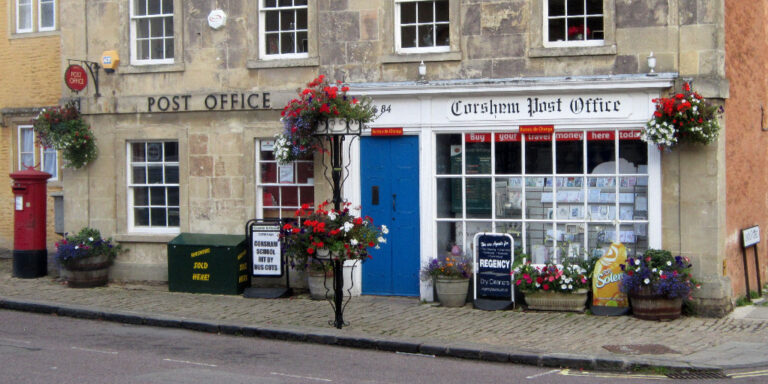
‘Miscarriage of justice’ as thousands of UK post workers falsely accused of fraud: Thousands of post office workers in the U.K. were falsely accused of accounting fraud–all because of a faulty computer system. Hundreds were falsely convicted, while many more lost their savings. Four committed suicide. Now, a new drama on the British channel ITV exposed the scandal and prompted the U.K. government to try to make amends.
When the system fails, you end up in nothing short of Modern Day Slavery.
H. To put a spoke in someone’s wheel
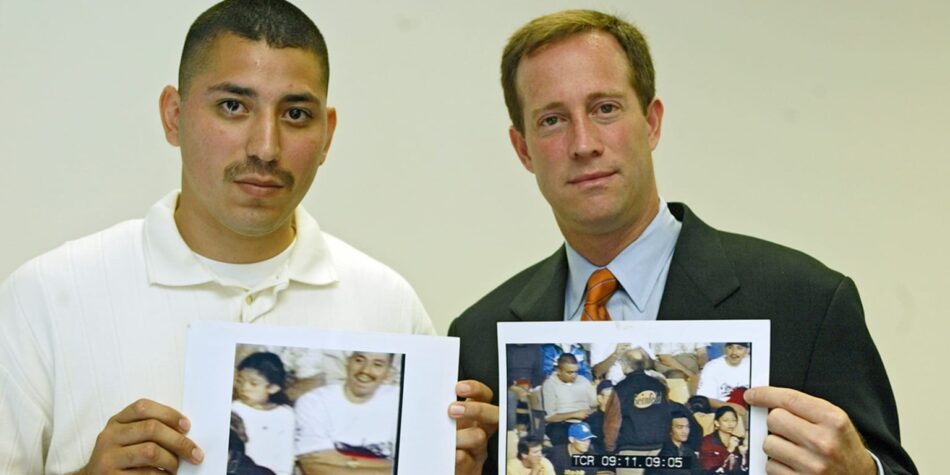
The right place at the right time. Juan Catalan spent nearly 6 months in jail for the murder of a teenage girl until his lawyer found unused footage from HBO’s ‘Curb Your Enthusiasm’ -that proved he’d been at a Dodger’s game with his 6-year-old daughter.
No matter how innocent you are. No matter how clear it is that you had nothing to do with it. And that you weren’t even there when something happened. Even if your entire life history shows that you cannot be labeled as a bad person, nothing helps when you end up in a deceitful justice system.
Like in the case of Julan Catalan, who spent 6 months in prison. This was his fate for the rest of his life. It’s coincidence, one in a million, that saved him. Something like that has nothing more to do with a justice system.
The impossibility of proving your innocence!
With a false testimony and a construction fabricated by 2 LAPD cops, Juan Catalan is framed at the scene of the murder.
How do you prove that you weren’t there at the time of the murder? It’s impossible to counter that.
The coincidence of being filmed at the baseball game station with 56,000 spectators, at the place where Juan Catalan was with his little daughter, and exactly at that moment.
By contacting the cellphone provider and pinpointing the cell tower near Dodger Stadium that Juan’s phone was pinging, as well as researching Juan’s calls with his girlfriend Alma that evening, the lawyer Melnik was able to determine that Juan was still at the stadium at 10:12 p.m.
Juan Catalan narrowly escapes trouble with the exceptional dedication of his lawyer. Saved From Crooked Cops and Lying Prosecutor.
The president of Duke University offers an apology for the handling of the Lacrosse scandal.
De onmogelijkheid om je onschuld te bewijzen!
Met een vals getuigenis en een constructie gefabriceerd door 2 LAPD cops wordt Juan Catalan geframed op de plaats van de moord.
Hoe bewijs je dat je daar niet was op het moment van de moord? Het is onmogelijk daar tegen op te tornen.
Het toeval dat er gefilmd wordt in het baseball game station met 56 000 toeschouwers, op de plaats waar Juan Catalan met zijn dochtertje was én precies op dit moment.
Door contact op te nemen met de mobiele provider en de zendmast in de buurt van Dodger Stadium te lokaliseren waar Juan’s telefoon contact mee maakte, en door het onderzoeken van Juan’s gesprekken met zijn vriendin Alma die avond, slaagde advocaat Melnik erin vast te stellen dat Juan om 22:12 uur nog steeds in het stadion was.
Juan Catalan kruipt door het oog van een naald met behulp van de uitzonderlijke inzet van zijn advocaat. Gered van corrupte agenten en liegende aanklager.
De president van de Duke University biedt excuses aan voor de afhandeling van het Lacrosse-schandaal.
The Guildford Four,
The Birmingham Six – 1974 – Who cares?,
Two cases in Great Britain where practices were employed that one cannot fathom, resulting in the wrongful imprisonment of innocents for 15 years.
In the case of The Birmingham Six, Prime Minister Tony Blair had to publicly apologize for the injustice caused by the judiciary.
Saint Omer, near Calais in northern France.
In the Saint Omer case, 17 people were imprisoned for 4 years based on one person giving false testimony.
The case became known as ‘The Birmingham Six of France.
When there are indications that the justice system is failing,
it is essential to approach the situation with caution.
——–
At times, one may observe actions that appear orchestrated
or even blatantly deceitful.
——–
Filing a lawsuit without grounds is a clear ‘Red Flag.’
Justice is not a fairy tale.
Examining cases where justice seems to falter,
or where its application is unexpected
or controversial,
can inspire thought-provoking discussions.
I. The goose that lays the golden eggs
1 Reactions Of INNOCENT Convicts SET FREE!
This channel will highlight the best courtroom moments, from courtroom chaos to enraged judges. This video is inspired by Court Cam and 60 Days In
The videos you’ll see here are in documentary text content of what happens in the courtroom and what happens leading up to it while also breaking down each scene in each video in extreme detail.
If you are or represent the copyright owner of materials used in this video and have a problem with the use of said material, please send an email to courtroomchannel@gmail.com and we can sort it out. Some original clips may be edited and trimmed down. This video is not legal advice. This video is for entertainment purposes only.
0:00 John Bunn
1:09 David Ranta
2:45 Susan Mellen
4:05 Luis Vargas
5:14 Daniel Villegas
6:44 Ricky Jackson
8:11 Kirstin Lobato
2 apr 2023
For copyright matters, please contact: juliabaker0312@gmail.com
Welcome to the Discoverize! Here, we dive into the most exciting and unbelievable things that the world has to offer. From ancient artifacts to mind-blowing scientific theories, there’s never a dull moment on our channel. Join us as we embark on a thrilling journey of discovery and wonder, and get ready to have your socks knocked off by the amazing things that we uncover. Whether you’re a lifelong learner or just looking for a good time, our channel is sure to entertain and educate. Buckle up and get ready for an unforgettable ride!
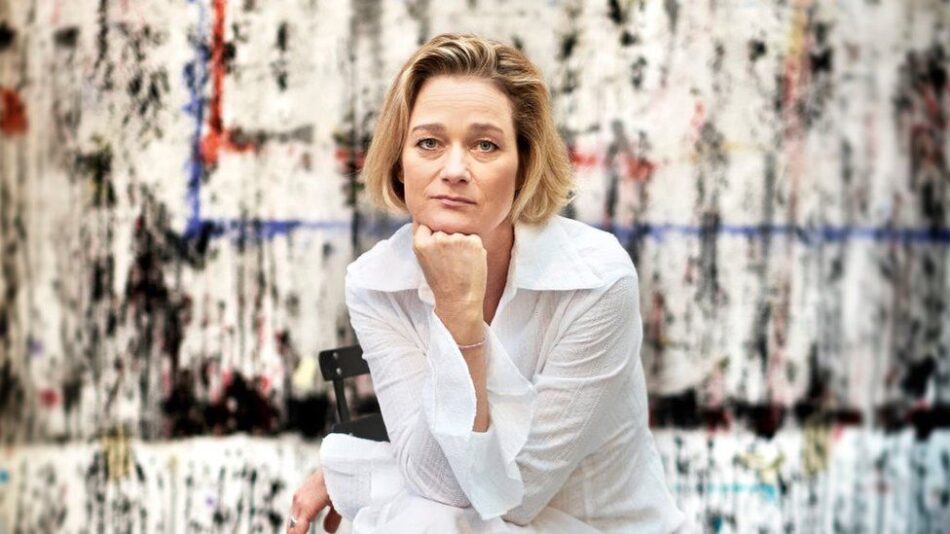
A Belgian appeals court has ruled that former King Albert II is to be fined €5,000 (£4,370) a day if he refuses to undergo a DNA test.
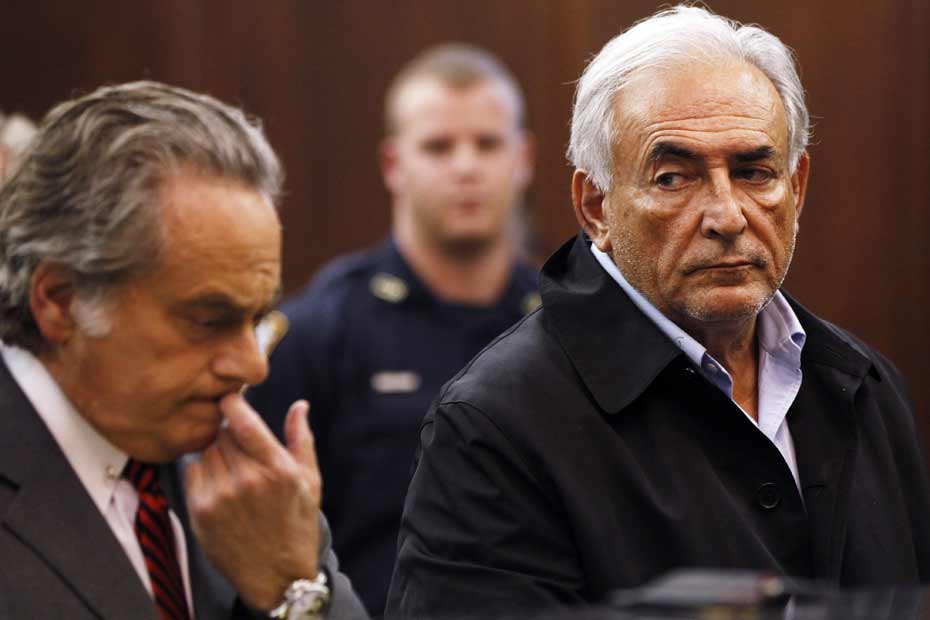
La journée noire de Dominique Strauss-Kahn
Similar to numerous instances highlighted on this homepage and across the website, there’s a trend where issues considered ‘indisputable and beyond question’ lead to an artificial construct within the realm of justice – a detached ivory tower, removed from life’s simple realities.
Put simply, much like the earlier point: Juan Catalan fell victim to elements within the justice system, enduring a 6-month prison sentence until lawyer Melnik unravelled the intricately woven web, akin to finding a needle in a haystack.
This serves as an example where financial resolution seems unattainable. Yet, akin to the Good Samaritan, the lawyer undertook what was necessary, ultimately resolving the case.
Another illustration lies in the case involving Belgian Princess Delphine versus King Albert II, a legal battle spanning approximately 20 years, involving 7 years in court. Albert II even appealed to the highest court twice and adamantly refused to provide his DNA until the court imposed a 5000 euro daily fine for non-compliance. It wasn’t until this penalty was enforced that a swift resolution emerged, despite Albert II’s legal team’s desire to prolong proceedings.
In essence, justice becomes akin to
a goose laying golden eggs,
an asset lawyers are reluctant to sacrifice,
artificially prolonging cases for financial gain.
Likewise, we can observe a similar situation in the well-known case involving DSK at the Sofitel Hotel in New York. Private detectives were employed as a deus ex machina, fabricating an artificial portrayal of the chambermaid, aimed at securing DSK’s release from prison. This incident prolonged for a total of 98 days. Subsequently, in a civil proceeding, DSK opted for a settlement, implying an acknowledgment of guilt, mirroring the case of King Albert II, where justice was seemingly manipulated in an entirely contrived manner.
Zoals in talloze voorbeelden op deze home pagina en doorheen de website, gebeurt het dat in kwesties die “absoluut duidelijk zijn, die niet kunnen onkent worden en niet kunnen in vraag gesteld worden” dat je bij justitie in een kunstmatige wereld terecht komt, de ivoren toren, wereldvreemd tegenover de eenvoudige werkelijkheid van het leven.
M.a.w. zoals in het vorige punt: Juan Catalan werd bedrogen door entiteiten binnen justitie, zat daardoor 6 maanden in de gevangenis en het was door de advocaat Melnik dat de kunstmatig in elkaar gestoken verwarde knoop ontward werd als de spelt in de hooiberg.
Dit is een van de voorbeelden die financieel onmogelijk op te lossen zijn, doch als de barmhartige samartitaan heeft deze advocaat gedaan wat nodig was en de zaak werd opgelost.
De lagerstaande kwestie van de Belgische Princes Dellphine tegenover koning Albert II, die ongeveer 20 jaar heeft aangesleept, waarvan 7 jaar in de rechtbank, waarbij Albert II zelfs tweemaal in cassatie gaat en weigert zijn DNA af te staan, tot de rechtbank een dwangsom oplegt van 5000 euro per dag dat Albert II weigert zijn DNA af te staan en dan is alles onmiddellijk opgelost. Rekening houdend dat zelfs dan nog de advocaten van Albert II nog wilden verderdoen.
M.a.w. justitie staat gelijk aan
de kip met de gouden eieren
die advocaten niet willen slachten,
om op een kunstmatige manier het geld binnen te rijven.
Idem heb je ook de lager staande kwestie van DSK in het Sofitel Hotel in New York. Privédetectives die als deus ex machina gebruikt worden om een kunstmatig beeld te creëren van het kamermeisje, om op die manier DSK vrij te krijgen uit de gevangen. Een kwestie die uiteindelijk 98 dagen heeft geduurd. In een burgerlijke procedure is DSK dan tot een schikking is gekomen, m.a.w. de schuld van het misdrijf staat vast, net zoals in het gebeuren van Koning Albert II die justitie op een totaal kunstmatige manier heeft gebruikt.
“DSK Maid” Tells of Her Alleged Rape by Strauss-Kahn: Exclusive
‘To see the speck in another’s eye, but not the beam in one’s own’.
J. The red line or
the line in the sand
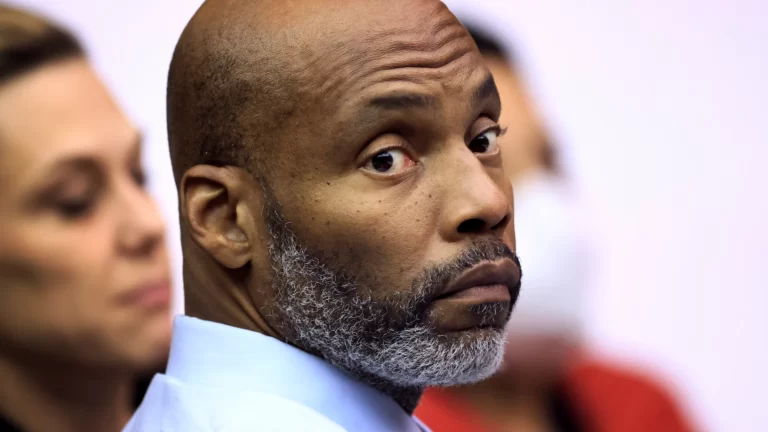
Convicted at 21, and still locked up at 49, Lamar Johnson has spent most of his life in prison for a crime he did not commit.
Both the former prosecutor and police detective leading Johnson’s case testified they had no evidence connecting Johnson to the murder. The conviction rested solely on Elking picking Johnson out of a lineup based upon Elking’s memory of seeing the masked gunman’s eyes for a few seconds — and it took Elking four times of viewing the same lineup to do it.
“You had a witness in this case who told you…at best he could recognize maybe something about the eyes,” Mason said to former detective Joseph Nickerson during the December hearing. “Are you sure this isn’t a situation where you guys were in a little bit of a rush to make a conviction?”
Please listen to video’s about the case Lamar Johnson
Wrongful convictions and miscarriages of justice are tragic examples of the flaws or misuse of the justice system.
Sometimes, due to various reasons such as flawed evidence, bias, procedural errors, or even intentional malpractice, innocent individuals can be wrongfully convicted and imprisoned for crimes they didn’t commit.
These cases highlight the complexity and imperfections within the justice system. The phrase “Justice Is a Two-Edged Sword” can apply here, illustrating how justice, when applied incorrectly or through flawed processes, can bring about severe harm and suffering to innocent individuals.
It showcases the dual nature of justice, where its application can have both positive outcomes when rightly served and devastating consequences when applied erroneously or unfairly.
Wrongful convictions underscore the importance of ensuring fair trials, proper investigation, unbiased proceedings, and continuous efforts to prevent and rectify miscarriages of justice. It’s a poignant reminder of the need for constant vigilance and improvement within legal systems to mitigate such injustices.
In Lamar Johnson’s case, reliance on eyewitness accounts was crucial, yet the circumstances, including the shooting in darkness and the perpetrators wearing masks, cast doubt on the accuracy of identifications. Complicating matters, an eyewitness later recanted, adding complexity. Johnson offered an alibi, presenting multiple facets for the jury to consider.
In het geval van Lamar Johnson was het sterk leunen op ooggetuigenverslagen essentieel, maar de omstandigheden, waaronder de schietpartij in het donker en de daders die maskers droegen, brachten twijfel over de nauwkeurigheid van de identificaties. Het werd ingewikkelder doordat een ooggetuige later zijn verklaring introk, wat complexiteit toevoegde. Johnson presenteerde een alibi en bood meerdere facetten aan de jury ter overweging.
K. The arc of the moral universe
will bend toward justice – but only if we pull it
You are 29 and without any data you spend 28 years in prison.
Shortly after his arrest, Detective Doug Acker told Hinton,
“I don’t care whether you did or didn’t do it. In fact,
I believe you didn’t do it. But it doesn’t matter.
If you didn’t do it, one of your brothers did.
And you’re going to take the rap.”
“I can give you five reasons why they are going to convict you.
- Number one, you’re black.
- Number two, a white man gonna say you shot him.
- Number three, you’re gonna have a white district attorney.
- Number four, you’re gonna have a white judge.
- And number five, you’re gonna have an all-white jury.”
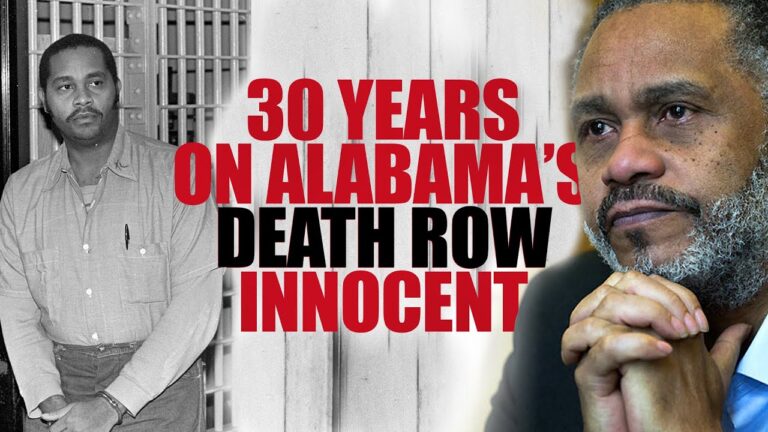
In what precedes, we have a series of examples where the justice system shows an incredibly difficult course, despite the fact that in all these examples, the individuals mistreated by the justice system cannot be linked to what is happening. It is remarkable what is happening within the justice system.
Throughout the entire course of such a legal affair, numerous complications can arise, causing furrowed brows, ultimately resulting in someone who knows nothing about it being put in great difficulty.
In wat vooraf gaat hebben we een reeks voorbeelden waar justitie een onvoorstelbaar moeilijk verloop vertoont, ondanks in al deze voorbeelden de personen die door justitie fout behandeld worden, niet in verband kunnen gebracht worden met wat er aan de hand is. Het is merkwaardig wat er bij justitie gebeurt.
Anthony Ray Hinton (born June 1, 1956) was wrongly convicted of the 1985 murders of two fast food restaurant managers in Birmingham, Alabama. Hinton was sentenced to death and held on the state’s death row for 28 years before his 2015 release.
In 2014 the Supreme Court of the United States unanimously overturned his conviction on appeal, after which the state dropped all charges against him. The court was unable to affirm the forensic evidence of a gun, which was the only evidence in the first trial. After being released, Hinton wrote and published a memoir The Sun Does Shine: How I Found Life and Freedom on Death Row (2018). Hinton was portrayed by O’Shea Jackson Jr. in the 2019 film Just Mercy.
L. Bread and Circuses
There was a significant scandal involving the British Post Office known as the “Post Office Horizon IT Scandal.”
In this scandal, subpostmasters were wrongly accused of theft, fraud, and false accounting due to issues with the Horizon accounting system, which was used by the Post Office.
The Horizon system, introduced in the early 2000s, had software glitches that led to discrepancies in accounting records. Many subpostmasters faced financial losses, bankruptcy, and legal troubles as a result of being held responsible for these discrepancies. The scandal came to light, and there were efforts to review and rectify the unjust convictions.
Subsequently, in 2021, the UK Court of Appeal overturned the convictions of many subpostmasters, acknowledging the flaws in the Horizon system and the impact on these individuals’ lives. The scandal highlighted concerns about the use of technology in legal matters and the need for a fair and just system.
De Britse Post Office-affaire, ook bekend als de “Post Office Horizon IT Scandal”, betrof onterechte beschuldigingen aan het adres van subpostmasters voor diefstal, fraude en valse boekhouding als gevolg van problemen met het Horizon-boekhoudsysteem dat door de Britse Post Office werd gebruikt.
Het Horizon-systeem, geïntroduceerd in het begin van de jaren 2000, vertoonde softwarefouten die tot onregelmatigheden in de boekhoudgegevens leidden. Veel subpostmasters leden financiële verliezen, gingen failliet en kregen juridische problemen doordat ze verantwoordelijk werden gehouden voor deze onregelmatigheden. Het schandaal kwam aan het licht, en er waren inspanningen om de onrechtvaardige veroordelingen te herzien en recht te zetten.
In 2021 heeft het Britse Hof van Beroep de veroordelingen van veel subpostmasters vernietigd, waarbij erkend werd dat er gebreken waren in het Horizon-systeem en dat dit ernstige gevolgen had gehad voor het leven van deze personen. Het schandaal bracht zorgen aan het licht over het gebruik van technologie in juridische zaken en de noodzaak van een eerlijk en rechtvaardig systeem.
LIFE IS NOT EASY!
HOW TO HANDLE AN EXCEPTIONAL SITUATION?
3 Chocolate Milkshake: The Power of Hope
2 Post Office scandal: Fujitsu staff knew about bugs, errors and defects in the system for years
Back to menu IMPORTENT CONTENT Listening recommended Must ***
19 jan 2024
The European boss of Fujitsu has admitted the company “clearly let society down” as he apologised again to subpostmasters and postmistresses over its role in the Horizon scandal.
Giving evidence to the public inquiry, Paul Patterson said Fujitsu staff had known about bugs, errors and defects in the system for years – but claimed the firm only became aware “latterly” that faulty data was being used in prosecutions.
Doomed from the very start, which was known by all parties
At minute 4: armed with all the knownledge, why not shoot it of the roof tops?
At minute 5: a massive cover up
At minute 6: alerted insurers in 2013, stopped prosecutions in 2014
At minute 7: a lot more than just money
- The Great British Post Office Wrongful Convictions Scandal is a kind of Candid Camera set in real life.
- A false image is deliberately created to falsely accuse people.
- Playing up appearances. An artificial event.
- In reality, it is internet problems that cause transactions to be lost.
- Het grote Britse postkantoorschandaal met onterechte veroordelingen is een soort Candid Camera die zich in het echte leven afspeelt.
- Op een bewuste wijze wordt een verkeerd beeld gecreëerd om mensen vals te beschuldigen.
- Het spelen van de schone schijn. Een kunstmatig gebeuren.
- In werkelijkheid zijn het internet problemen die oorzaak zijn dat transacties verloren gaan.
Please listen to more video’s by Bryan Stevenson
4 Falsely Accused Former Postmasters: ‘Money Doesn’t Come with an Erase Button.’| Good Morning Britain
Back to menu IMPORTENT CONTENT Listening recommended Must ***
11 jan 2024
Parmod Kalia and Janet Skinner were both wrongly convicted following false accusations of stealing thousands of pounds from their respective post offices. Despite having their convictions quashed in 2021 they are still waiting for compensation.
Former Postmaster Parmod Kalia was sentenced to six months in jail after being falsely accused of stealing £22,000.
Former sub-postmaster Janet Skinner served three months of a nine-month sentence in prison after being falsely accused of stealing almost £60,000 from the Post Office she ran.
Broadcast on 11/01/24
Both 3 months in prison
5 Post office inquiry: Fujitsu manager called bankrupted subpostmaster ‘nasty chap’
18 jan 2024
A Fujitsu employee called a subpostmaster who was bankrupted by the company’s faulty computer system a “nasty chap” in not-seen-before email sent internally in 2003.
Peter Sewell, who was in the Post Office Account Security Team at Fujitsu, said that Lee Carrington was a “nasty man” after the subpostmaster had threatened the company with legal action after losing all his money due to no fault of his own.
Fujitsu provided the Post Office with the Horizon computer system for individual subpostmasters. This system wrongly said that hundreds of subpostmasters had been committing fraud and more than 700 were wrongly convicted.
The email was revealed at the ongoing Post Office Horizon Inquiry.
A culture of
‘hanging someone out to dry’
prevailed in the British Post Office
during the IT Horizon scandal,
where victims were wrongly prosecuted over many years.
The Post Office lied on an industrial scale to ministers,
resulting in a total mess.
The strategy is made clear e.g. in the email from Peter Sewell,
a Fujistu boss, to Andy Dunk,
the witness for the court,
with the pep talk about Lee Caslteton which
he called a nasty chap, and the answer from Dunks:
“Thank you for those very kind and encouraging words.
I had to pause halfway through reading it to wipe away a small tear.“
Hang someone out to dry:
To allow someone to be punished, criticized,
or made to suffer in a way that is unfair, without trying to help them.
Please listen to video 5 above ‘Post office inquiry:
Fujitsu manager called bankrupted subpostmaster ‘nasty chap’
The video reveals an
appalling and shameful
attitude exhibited by Peter Sewell.
There is one rule in this country for those in power
and another for those who don’t have it.
The Post Office Scandal is deeply instructive
regarding the organization of our society
for both those who possess power
and those who lack it.
6 Labour MP corners Post Office bosses over dodgy bonus culture in fiery Select Committee exchange
Back to menu IMPORTENT CONTENT Listening recommended Must ***
Head honchos at the Post Office and members of their remuneration committee were in front of the Business and Trade Select Committee on Tuesday, where chair of the Committee Darren Jones absolutely rinsed them over an apparent breach of rules related to the awarding of bonuses – which can lead to years in jail if found guilty.
1. The poor – work & work.
2. The rich – exploit the poor.
3. The soldier – protects both.
4. The taxpayer – pays for all three.
5. The banker – robs all four.
6. The lawyer – misleads all five.
7. The doctor – bills all six.
8. The goons – scare all seven.
9. The Politician – lives happily
on account of all eight.
Written in 43 B.C. Valid even today!
7 Former Fujitsu manager calls errors a ‘contractual problem’ in Post Office scandal inquiry
Back to menu IMPORTENT CONTENT Listening recommended Must ***
10 jan 2024
Iain Dale and his Cross Question panel discuss what’s next for the Post Office scandal after the company’s former boss, Paula Vennells, announced she’d be handing back her CBE with immediate effect.
Our Cross Question panel: Mims Davies (Minister for Disabled People, Health and Work, and Conservative MP for Mid Sussex), Darren Jones (Shadow Chief Secretary to the Treasury and Labour MP for Bristol North West), Emma Sinclair (Tech entrepreneur – who is the chief executive of EnterpriseAlumni), Oli Dugmore (Head of News and Politics at JOE Media, and LBC presenter).
8 Post Office scandal is ‘deeply instructive’ about how the UK works | LBC debate
Back to menu IMPORTENT CONTENT Listening recommended Must ***
10 jan 2024
Iain Dale and his Cross Question panel discuss what’s next for the Post Office scandal after the company’s former boss, Paula Vennells, announced she’d be handing back her CBE with immediate effect.
Our Cross Question panel: Mims Davies (Minister for Disabled People, Health and Work, and Conservative MP for Mid Sussex), Darren Jones (Shadow Chief Secretary to the Treasury and Labour MP for Bristol North West), Emma Sinclair (Tech entrepreneur – who is the chief executive of EnterpriseAlumni), Oli Dugmore (Head of News and Politics at JOE Media, and LBC presenter).
In April 2021, the Court of Appeal quashed the convictions of 39 former Subpostmasters and ruled their prosecutions were an affront to the public conscience. They were just a few of the hunderds who had been prosecuted by the Post Office using IT evidence from an unreliable computer system called Horizon.
When the Post Office became aware that Horizon didn’t work properly, it covered it up.
The Great Post Office Scandal is the Story of how these innocent people had their lives ruined by a once-loved national institution and how, against overwelming odds, they fought back to clear their names. The fight to expose a multimillion Pound IT disaster which put innocent people in jail.
Gripping, heart-breaking and enlighening, The Great Post Office Scandal by Nick Wallis should be read by everyone who wants to understand how this massive miscarriage of justice was allowed to happen.
An extraordinary journalistic exposé of a huge miscarriage of justice.
Nick’s narrative has the power of a great thriller as he lays bare the lies and deceit that has ruined so many lives.
A tale brilliantly told by Nick Wallis, who has dedicated years of work to establishing what happened, why it happened, and calling those responsible to account. I urge you to read it.
In april 2021 heeft het Hof van Beroep de veroordelingen van 39 voormalige Subpostmasters vernietigd en geoordeeld dat hun vervolgingen een affront waren voor het publieke geweten. Ze waren slechts enkelen van de honderden die vervolgd waren door het Postkantoor op basis van IT-bewijs van een onbetrouwbaar computersysteem genaamd Horizon.
Toen het Postkantoor zich ervan bewust werd dat Horizon niet goed werkte, heeft het dit verdoezeld.
Het Grote Postkantoor Schandaal is het verhaal van hoe deze onschuldige mensen hun levens verwoest zagen door een eens geliefde nationale instelling en hoe ze, tegen overweldigende kansen in, terugvochten om hun namen te zuiveren. De strijd om een IT-fiasco van miljoenen ponden bloot te leggen dat onschuldige mensen in de gevangenis bracht.
Meeslepend, hartverscheurend en verhelderend; The Great Post Office Scandal by Nick Wallis zou gelezen moeten worden door iedereen die wil begrijpen hoe deze enorme gerechtelijke dwaling kon plaatsvinden.
Een buitengewoon journalistiek exposé van een groot gerechtelijk falen.
Nick’s verhaal heeft de kracht van een geweldige thriller terwijl hij de leugens en bedrog blootlegt die zoveel levens hebben verwoest.
Een briljant verteld verhaal door Nick Wallis, die jarenlang werk heeft toegewijd aan het vaststellen van wat er is gebeurd, waarom het is gebeurd, en het verantwoordelijk houden van degenen die ervoor verantwoordelijk zijn. Ik dring er bij je op aan om het te lezen.
M. Blinded and Derailed
The unimaginable large-scale event, ‘The Post Office Wrongful Conviction Scandal,’ is a prime example of what can happen in a society.
Out of nowhere, like a bolt from the blue, 730 people in the United Kingdom – each responsible for their respective post office – were convicted of theft, even though everyone knew they were innocent.
The flawed technology of the Horizon IT project was the culprit behind lost transactions, resulting in discrepancies in the postmaster’s accounting at the end of the day. In 1999, the UK implemented an IT project that computerized the post offices.
In clear language, one can say that it can happen to anyone that justice suddenly, without reason, cause, or basis, determines your life, despite there being nothing to be noted about you.
This is what happened suddenly to 19-year-old Liam Allan as a university student. A minute before twelve, he narrowly escaped a 10-year prison sentence and a lifetime branded as a dangerous sexual delinquent.
The website paints a picture of a kind of justice as an artificial context in which the innocent are consciously shattered by being imprisoned without the slightest fair judicial process, with no hope of ever being free again.
In klare taal kan men zeggen dat het iedereen kan overkomen dat justitie plotseling, zonder reden, aanleiding of oorzaak, je leven bepaalt, ondanks dat er niets op je is aan te merken.
Dit is wat de 19-jarige Liam Allan plotseling overkwam als universiteitsstudent. Een minuut voor twaalf ontsnapte hij ternauwernood aan een 10 jaar durende gevangenisstraf en een leven lang gebrandmerkt te worden als gevaarlijke seksuele delinquent.
De website schetst een beeld van een soort justitie als een kunstmatige context waarin onschuldigen bewust worden verbrijzeld door hen zonder het minste eerlijke verloop van justitie op te sluiten, zonder hoop om ooit nog vrij te komen.
It is revolting;
in all cases,
there is absolutely nothing,
no data whatsoever,
no matter how you look at it,
no connection or indication whatsoever.
It is clearly wrong,
and yet the blame is placed on you,
even though everyone knows how it all fits together
or what the cause is.
According to a specific pattern,
deceptive methods are used
to create a false impression.
The flawed technology of the Horizon IT project
in The Post Office Wrongful Conviction Scandal
is a prime example of
how justice can be wrongly employed
to crush the innocent.
The layers of complexity
There is nothing wrong,
but you find yourself in an artificial legal context.
Taken for a ride by the justice system
In the listed examples, a photo is used, but you are not the person in the photo.
(The case of Sheldon Thomas, who was sentenced to 19 years in prison at the age of 16).
You were not at the crime scene but at a sports event with more than 50,000 spectators
and your phone conversation is intercepted in the vicinity of the stadium.
Yet, you get into trouble until coincidental film footage emerges, taken at the actual location where you were.
(The case of Juan Catalan: Saved from Crooked Cops and a Lying Prosecutor).
Another example involves a so-called witness being pressured.
However, the perpetrator could not be identified because he was masked.
Therefore, claiming that the perpetrator was recognized is pointless.
(The case of Lamar Johnson, a 21-year-old who was locked up for 28 years).
This is what happened to John Bunn.
He was at home sleeping at 4 o’clock in the morning,
and, knowing he was innocent,
he was imprisoned for 17 years due to corrupt cop Louis Scarcella
(see the link to the first video: Top 7 Reactions Of INNOCENT Convicts Set Free).
Similar incidents happened to the other 6 people in the video.
On the other hand, a decision cannot be made based on something one does not know,
or creating an image of a person with an attitude and behavior that is not at all consistent with the person you are.
“Taken for a ride by the justice system”
conveys the idea that someone feels deceived or mistreated by the legal system.
It suggests a sense of being manipulated or experiencing unfair treatment
within the context of the justice system.
The Dutch expression
“Erin geluisd worden”
can be roughly translated to English as
“to be taken for a ride“
or “to be fooled“.
It implies being deceived or
tricked into something without being aware of it.
(iemand) slecht behandelen of misleiden waardoor hij of zij in de problemen komt informeel
Voorbeeld: ‘Wat een waardeloos product..
“Unsafe conviction” is a suitable expression to describe a conviction that is questionable or doubtful
due to issues such as errors in the legal process, insufficient evidence,
or other factors that may have led to an incorrect judgment.
It implies that the conviction may not be secure or reliable.
The term ‘unsafe conviction’ is often used in discussions about wrongful convictions
or cases where doubts arise about the fairness and accuracy of the legal outcome.
N. A cock-and-bull story
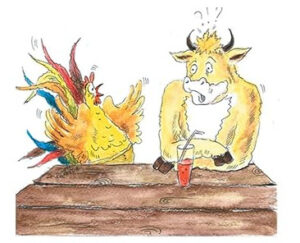
A fictitious cock seeking advice from a bull – A cock-and-bull story.
Lord Justice Fraser makes a comparison, namely that despite the 29 bugs and errors being known since the beginning,
it was an absurdity to insist that Horizon was the Gold standard.
Just as one would claim in the 21st century that the Earth is flat.
Using such a paradox and blatant lie as a cover-up underscores how questionable things sometimes are within the justice system, accusing flawlessly innocent people without mercy of something they haven’t done. When it comes down to it, Paul Patterson, a Fujitsu boss, said: Shameful and Appailling
In the Britisch Post Office scandal it’s clear that in the context of the Horizon scandal, there were deliberate actions and decisions that unjustly harmed innocent people.
The deliberate scapegoating of individual postmasters and mistresses, knowing the issues lay within the Horizon system, can be seen as a purposeful disregard for the well-being of these individuals. The impact on their lives, including financial ruin, loss of employment, and in some cases imprisonment, is a grave injustice.
It is a stark example of the potential harm that can be caused when organizations prioritize protecting their reputation over the well-being of individuals and the integrity of the justice system.
9 Mr Bates vs The Post Office – The Real Story
het komt erop neer dat de 21e eeuw het equivalent is van volhouden dat de aarde plat is
Educational: This video is essential viewing
Viewers watching the new ITV drama about the Post Office scandal will have noticed a well-dressed and bespectacled High Court judge presiding over affairs
The verdict of the real-life Lord Justice Fraser KC in Bates and Others versus Post Office Ltd saw 550 sub-postmasters win £58 million.
Lord Fraser ruled that the fault was with the computer system, and identified almost 30 glitches.
He sent a letter in January 2020 to Sir Max Hill KC, the former director of public prosecutions (DPP),
stating that the trial found evidence that Fujitsu knew about the existence of bugs, errors and defects in Horizon software…
When you read Nick Wallis’ book, ‘The Great Post Office Scandal,’ you find yourself rooted to the ground in certain passages; your mind comes to a standstill.
What people who have done nothing wrong have had to endure is indescribable in words.
If you haven’t read the book (562 pages), you don’t have a detailed overview of the entirety of what is so shocking about the whole situation.
Justice Fraser delivered a 330-page judgment outlining his findings on the Horizon.
On the day the judgment was handed down, our side was totally crammed with people. On the other side of the court, there were just two people. They knew what was going to happen; they knew which way this judgment was going to land, and it did. Mr. Fraser’s Horizon issues judgment.
This approach by the Post Office has amounted, in reality, to baseless assertions and denials that ignore what has actually occurred.
It amounts to the 21st-century equivalent of maintaining that the Earth is flat.
Wanneer je het boek leest van Nick Wallis, ‘The Great Post Office Scandal,’ ben je aan de grond genageld in bepaalde passages; je verstand staat stil. Wat mensen die niets misdaan hebben, hebben moeten meemaken, is met woorden niet uit te drukken.
Wanneer je het boek niet gelezen hebt (562 pagina’s) heb je geen overzicht in detail van het geheel van wat zo schokkend is aan het gehele gebeuren.
Rechter Fraser heeft een uitspraak van 330 pagina’s geleverd waarin hij zijn bevindingen over de Horizon uiteenzet.
Op de dag dat het vonnis werd uitgesproken, zat onze kant vol met mensen. Aan de andere kant van de rechtbank waren er slechts twee mensen. Ze wisten wat er zou gaan gebeuren; ze wisten welke kant dit vonnis op zou gaan, en dat gebeurde ook. De Horizon-zaak van de heer Fraser.
Deze benadering door het postkantoor heeft in werkelijkheid geleid tot ongefundeerde beweringen en ontkenningen die negeren wat er daadwerkelijk is gebeurd.
Het komt neer op het 21e-eeuwse equivalent van beweren dat de aarde plat is.
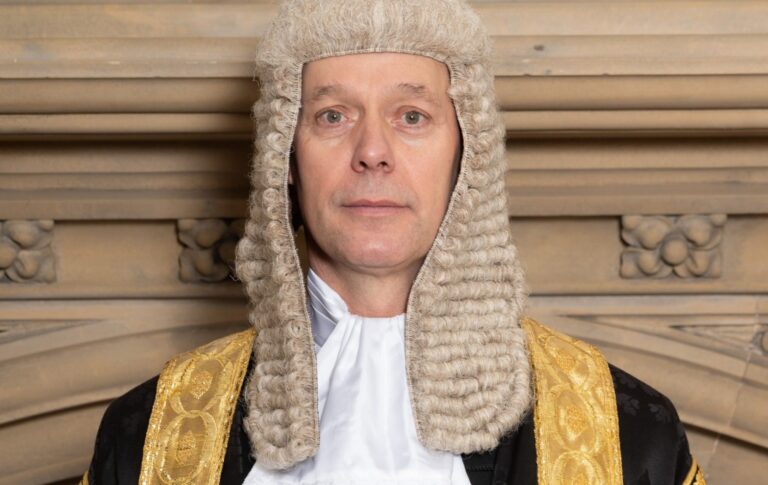
Lord Justice Fraser, the judge who stopped the operator of Horizon system. Rulings and regulations of man who presided over the Bates and Others versus Post Office Ltd case.
It amounts to the 21st-century equivalent of maintaining that the Earth is flat.
O. The aura of perfection
There is something profoundly unsettling about the way thousands of people can be prosecuted,
convicted, and possibly sentenced to endless prison terms, either due to flaws in the justice system
or the unfortunate choice of some to plead guilty to avoid wrongful imprisonment.
The question remains:
how can someone be deemed guilty
of something they didn’t do?
Malevolent
Causing or wanting to cause harm or evil:
The central character is a malevolent witch out for revenge.
I could feel his malevolent gaze as I walked away.
Please listen to the video below and pay attention
to the clear language and characterizations:
‘Mafia-style’ bullying
It is shocking what happened.
10 Post Office scandal: Britain’s worst miscarriages of justice
Back to menu IMPORTANT CONTENT Listening recommended Must ***
An inside look into the biggest miscarriage of justice in U.K history | 7 News Australia
13 feb 2024
The victims of the infamous UK post-office scandal have fresh hope and support, after a new docu-drama, airing on Channel 7 tomorrow, has thrown the scandal back into spotlight and public discourse. Patrick Spence, the show’s Executive Producer, joins us to discuss the response so far.
7NEWS combines the trusted and powerful news brands including Sunrise, The Morning Show, The Latest, and 7NEWS.com.au, delivering unique, engaging and continuous coverage on the issues that matter most to Australians. Watch 7 News Australia full broadcasts and full episodes nightly at 6pm and weekdays at 11:30am and 4pm on Channel 7 and 7plus.
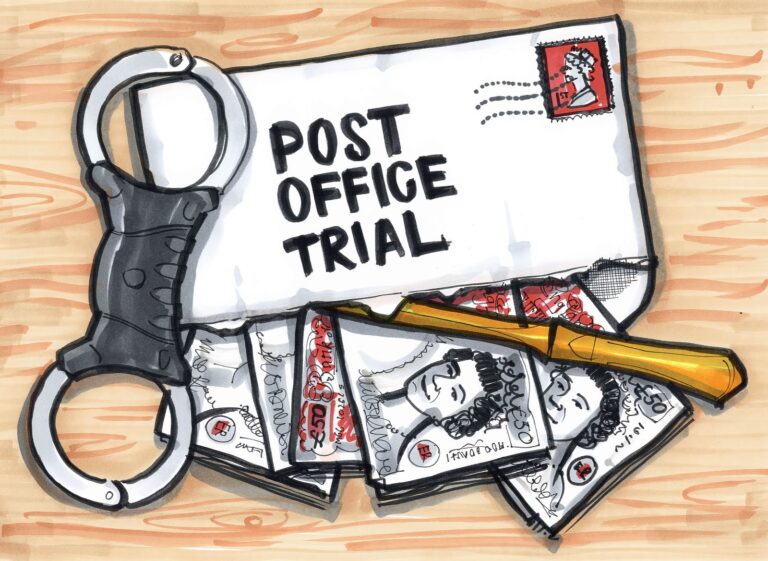
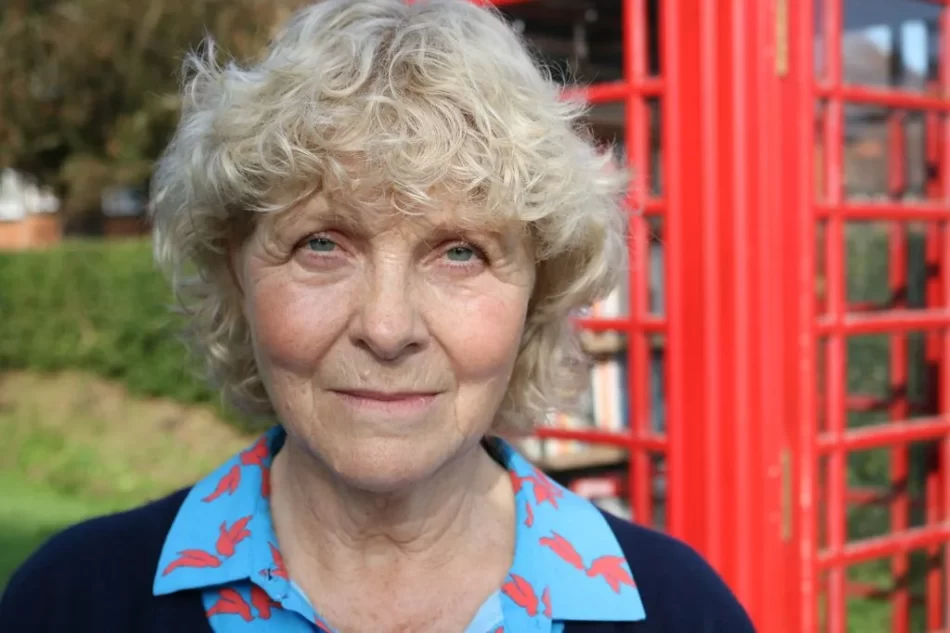
Jo Hamilton, 66, was one of more than 700 sub-postmasters prosecuted between 2000 and 2014, based on information from the Post Office’s faulty Horizon accounting system, which had been installed in branches across England and Wales. One of 73 people Hudgell Solicitors has since helped to clear their names, Mrs Hamilton was prosecuted for a shortfall in accounts of £36,000 in 2006, having being misled and told she was the only person facing issues with the accounting system. Like many others, she was repeatedly told to ‘put right’ shortfalls in accounts, leading to her remortgaging her home, and borrowing from friends to cover the amount which was alleged to have gone missing. She was eventually persuaded to plead guilty to a charge of false accounting – less serious than the initial charge of theft which she’d denied at an initial court hearing –to avoid going to jail.
11 Post Office scandal investigators accused of ‘Mafia-style’ bullying of subpostmasters
Back to menu IMPORTANT CONTENT Listening recommended Must ***
11 jan 2024
A former Post Office investigator has told the public inquiry into the Horizon scandal that he and his colleagues did not “behave like mafia gangsters”.
Stephen Bradshaw admitted he had been aware of problems with the IT software, but claimed he was “not technically minded” and was just “a liaison”.
Warning: This report contains some offensive language
At minute 2: Mafia tactics
At minute 2;50: Malevolence
At minute 5: There is no perfect way of doing that
At minute 6:30 Alan Bates went to court
At minute 7: Malevolence: the quality of causing or wanting to cause harm or evil
At minute: 8 More then Malevolence
Post Office scandal investigators accused of ‘Mafia-style’ bullying of subpostmasters
Webpagina: Post Office Scandal: Fetter Lane is where they used to hang people out to dry
MPs wipe floor with disgraceful Post Office in House of Commons
At minute 2: “Mafia tactics”
At minute 2:50: “Malevolence”
At minute 5: “There is no perfect way of doing that.”
At minute 6:30: “Alan Bates went to court.”
At minute 7: “Malevolence – the quality of causing or wanting to cause harm or evil.”
At minute 8: “More than malevolence.”
Justice can be used in a disgusting and reprehensible manner.
Someone can, due to a deceptive context, such as in numerous examples on the website, innocently end up in serious trouble in an unthinkable way, be convicted, and even end up in prison, as in the British Post Office scandal.
The Post Office Scandal is, at its core, inflicting harm on persons who have done nothing wrong.
People with a ‘Spotless Reputation’
Malevolence: the quality of causing or wanting to cause harm or evil (Cambridge Dictionary).
‘This approach by the Post Office has amounted, in reality, to baseless assertions and denials that ignore what has actually occurred.
The Horizon IT system never worked and it ended up causing massive holes in sub-postmasters’ account for which thet were blamed.
Justitie kan op een weerzinwekkende en verwerpelijke manier gebruikt worden.
Iemand kan door een bedrieglijke context, zoals in talrijke voorbeelden op de website, op ondenkbare manier onschuldig in ernstige moeilijkheden komen, veroordeeld worden en zelfs in de gevangenis belanden, zoals in het Britse Post Office-schandaal.
The Post Office Scandal is in de kern kwaad berokkenen aan personen die niets misdaan hebben.
Mensen met een ‘vlekkeloze reputatie.
Kwaadaardigheid: de eigenschap kwaad of kwaad te veroorzaken of te willen veroorzaken (Cambridge Dictionary).
Deze aanpak van het postkantoor komt in werkelijkheid neer op ongefundeerde beweringen en ontkenningen die voorbijgaan aan wat er werkelijk is gebeurd.
Het Horizon IT-systeem heeft nooit gewerkt en veroorzaakte uiteindelijk enorme gaten in de rekeningen van subpostmeesters, waarvoor zij de schuld kregen.
I think this drama will bring the story of what happened to hundreds of subpostmasters to a whole new audience, and they will be shocked and appalled by what they see.
The Post Office destroyed lives. Even now, with evidence being heard at the Public Inquiry, I sit and think ‘how on earth could someone do that to people and then go home and sleep at night’.
I think many people will have heard of the Post Office scandal and perhaps think only a few were affected.
What this drama shows is how it destroyed so many lives, and the battle we faced to take on the Post Office, and ultimately prove our innocence and win.
Transcrip: part of video ‘Post Office scandal investigators accused of ‘Mafia-style’ bullying of subpostmasters’
It has been going on for so long now, with so many different people failing the sub-postmasters—failed by the courts, which didn’t demand that the Post Office should provide proper disclosure of evidence; failed by the Post Office itself; obviously failed by Fujitsu; and failed by the politicians, including ourselves. If you watch the drama, you’ll see that I actually achieved nothing. It was only Alan Bates getting 555 people together to take it to court and to get funding for that, that achieved this incredible result.
So, Hartley Alan Bates’s lawyer, who spoke to Alex Thompson earlier today, says Fujitsu, for instance, should be paying millions of pounds right now into a fund that could be used later on. That would be one element of the justice that has not yet been achieved in all this. Do you agree with him? I agree with him, except that I think it should be hundreds of millions of pounds because Fujitsu was the company that was interfering in Subpostmasters’ accounts, not keeping a record of what it was doing, denying that it could do that, and doing all of that while it knew that people were being prosecuted and sent to prison for altered accounts. It is an awful, shocking story. Shocking also because this isn’t about corporate negligence; this is about malevolence—incentivized by bonuses, absolutely right.
What the Post Office did was it installed a program that it knew was faulty and then prosecuted the subpostmasters and demanded money from the sub-postmasters on the basis that the program was not faulty. In itself, it seems to me to be a simple matter of perversion of the course of justice, as well as probably theft, fraud, and various misuse act offenses all over the place. So yes, malevolence is the right word. Maybe it should be stronger than that. Well, given that, it might be stronger than that. Or do you say it should be stronger than that?
What does justice in all this look like? I mean, justice is the one thing that these poor people haven’t seen yet. Yes, justice means a number of things: overturning these convictions that should never have taken place, redress for those victims that had money taken away from them and their lives ruined, their marriages broken up, their houses repossessed, and bankrupted. Some of them took their own lives. It means holding to account the people who are responsible for this, which includes obviously the Post Office management, Post Office investigators, maybe the civil servants who were overseeing in theory what the Post Office was doing, maybe even the ministers, but also Fujitsu, which was doing these appalling things.
Are you talking about criminal charges then against those responsible? Certainly criminal charges. I can’t say against whom or for precisely what crimes. That’s a matter for the prosecuting authorities. But it would be awful if there weren’t some form of prosecution campaign beginning now. Lord Arbuthnot, thank you very much indeed.
The term “surreal” refers to something that is bizarre, dreamlike, or seemingly unreal in a way that challenges one’s sense of reality. It often describes situations or events that are so unusual or unexpected that they feel like a strange or distorted dream.
In the context of the British wrongful Post Office scandal, if someone describes it as surreal, they are likely expressing astonishment at the extraordinary and perhaps absurd nature of the events.
De term “surrealistisch” verwijst naar iets dat bizar, droomachtig of schijnbaar onwerkelijk is op een manier die iemands gevoel van realiteit uitdaagt. Het beschrijft vaak situaties of gebeurtenissen die zo ongebruikelijk of onverwacht zijn dat ze aanvoelen als een vreemde of vervormde droom.
In de context van het Britse schandaal met het onrechtmatig handelen van de posterijen, als iemand het als surrealistisch omschrijft, drukt diegene waarschijnlijk verbazing uit over de buitengewone en misschien absurde aard van de gebeurtenissen.
P. A Mirror of Madness
Postmasters accused of theft have convictions overturned | ITV News
24 apr 2021
Thirty-nine former sub-postmasters who were convicted of theft, fraud and false accounting due to the Post Office’s defective Horizon accounting system have had their names cleared by the Court of Appeal.
The Post Office prosecutions “irreparably ruined” the lives of scores of sub-postmasters causing them to lose their jobs, homes and marriages, the Court of Appeal heard last month.
Educational: This video is essential viewing
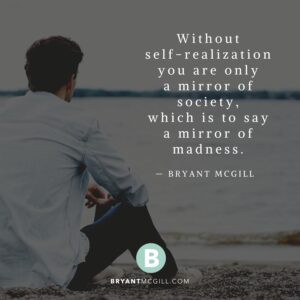
He was formerly an MP, first for Wanstead and Woodford between 1987 and 1997, and then for North East Hampshire between 1997 and 2015.
While still an MP, Arbuthnot got involved in the campaign for exposure and justice surrounding the Post Office scandal, in which hundred were wrongly accused and convicted of theft, fraud and false accounting, due to a faulty computer system.
This was after it was brought to his attention by his constituent, Jo Hamilton, who was charged. He went on to lead the cross-party parliamentary group of MPs who came together after their constituencies asked them for help.
In 2015, Arbuthnot called for a judge-led investigation into the Post Office’s handling of the issue, saying: “These are people who have been pillars of the community and have their reputations dragged through the mud. The way they have been treated is an utter disgrace.”
In December 2019, a High Court judge ruled that Horizon contained a number of “bugs, errors and defects” and there was a “material risk” that this caused shortfalls in accounts.
The British Post Office has existed since 1660, which is 47 years before the establishment of the United Kingdom (in other words, it is more than 3 centuries old). It is considered the most trusted brand.
Since 2000, over a period of 14 years, like a devil in a holy water font, everything has been done to accuse innocent employees of this organization, highly regarded, of theft, and so on.
This occurred at a rate of more than 1 postmaster per week, knowing that the 736 employees directly prosecuted by The British Post Office have absolutely done nothing wrong. A form of unabashed modern-day slavery, with a devastating impact comparable to hell. The video in this section describes the reprehensible events.
One creates a context unrelated to justice. The word justice is used to create a deceptive context and to have free rein to act ruthlessly, to do what one cannot imagine.
The behavior resembles that of a psychopath who knows the tricks of ultimate deception and, in this way, without reason, cause, or origin, creates an image that does not correspond to reality.
One should read Nick Wallis’s book, “The Great Post Office Scandal – The Fight to Expose a Million Pound IT Disaster which Put Innocent People in Jail,” chapter by chapter, as it clearly illustrates the shocking way a law firm, having received over £35 million, in collaboration with others, has gone to great lengths to plunge people’s lives into the abyss on a large scale.
The British Post Office bestaat sinds 1660, wat 47 jaar vóór de oprichting van het Verenigd Koninkrijk is (met andere woorden, het is meer dan 3 eeuwen oud). Het wordt beschouwd als het meest vertrouwde merk.
Sinds 2000 is er gedurende een periode van 14 jaar, als een duivel in een wijwatervat, alles in het werk gesteld om onschuldige medewerkers van deze organisatie, die hoog in aanzien staat, te beschuldigen van diefstal enzovoort.
Dit gebeurde met een ritme van meer dan 1 postmeester per week, wetende dat de 736 medewerkers die direct door The British Post Office werden vervolgd, absoluut niets verkeerd hebben gedaan. Een vorm van onvervalste moderne slavernij, met een ontluisterende impact vergelijkbaar met de hel. De video in deze sectie beschrijft het weerzinwekkend gebeuren.
Men creëert een context die niets met justitie te maken heeft. Men gebruikt het woord justitie om een bedrieglijke context te creëren en vrij spel te krijgen om meedogenloos te handelen, om te doen wat men niet voor mogelijk houdt.
Het gedrag lijkt op dat van een psychopaat die de trukendoos kent van ultieme misleiding en op die manier, zonder reden, aanleiding of oorzaak, een beeld creëert dat niet overeenkomt met de werkelijkheid.
Men dient het boek van Nick Wallis, “The Great Post Office Scandal – The Fight to Expose a Million Pound IT Disaster which Put Innocent People in Jail,” – hoofdstuk na hoofdstuk te lezen, omdat het duidelijk maakt op welke schokkende manier een advocatenkantoor, dat meer dan 35 miljoen pond heeft ontvangen, in samenwerking met anderen, alles in het werk heeft gesteld om op grootschalige wijze het leven van mensen in de afgrond te storten.

The Post Office Horizon Scandal: Lord Arbuthnot of Edrom on campaigning for justice | House of Lords
We cannot minimize what is happening,
the devastating impact on the lives of perfectly innocent people.
It is described in strong language.
- Lord Arbuthnot of Edrom calls The Post Office a very dangerous dog and monsterous injustice
- Lord Justice Fraser compares the baseless assertions and denials of the Post Office that ignore what has actually occurred. It amounts to the 21st-century equivalent of maintaining that the Earth is flat.
Lord Arbuthnot states that more than 900 individuals were unjustly convicted, actions that should never have occurred. They experienced financial losses, life ruin, marital breakdowns, home repossessions, and bankruptcy. Regrettably, some individuals took their own lives.
The scandal saw a faulty computer system, Horizon, lead to errors in financial reporting, leading to hundred of subpostmasters and mistresses being wrongly accused and convicted of theft, fraud and false accounting.
Lord Arbuthnot geeft aan dat meer dan 900 personen onterecht veroordeeld zijn, wat nooit had mogen gebeuren. Ze hebben financiële verliezen geleden, hun levens zijn verwoest, huwelijken zijn stukgelopen, huizen zijn in beslag genomen en sommigen zijn failliet gegaan. Helaas hebben enkelen van hen hun eigen leven genomen.
Tijdens het schandaal leidde een gebrekkig computersysteem, Horizon, tot fouten in de financiële rapportage, waardoor honderden onderpostmeesters en maîtresses ten onrechte werden beschuldigd en veroordeeld voor diefstal, fraude en valse boekhouding.
